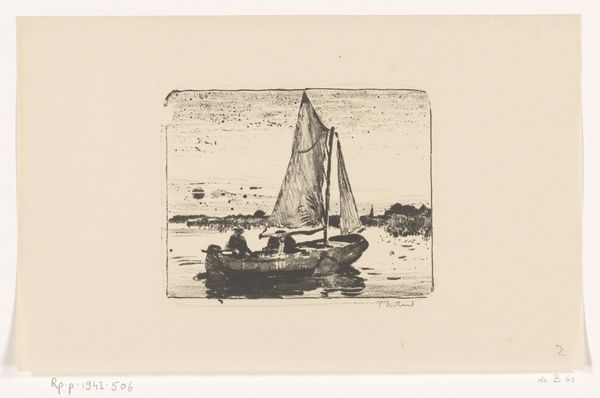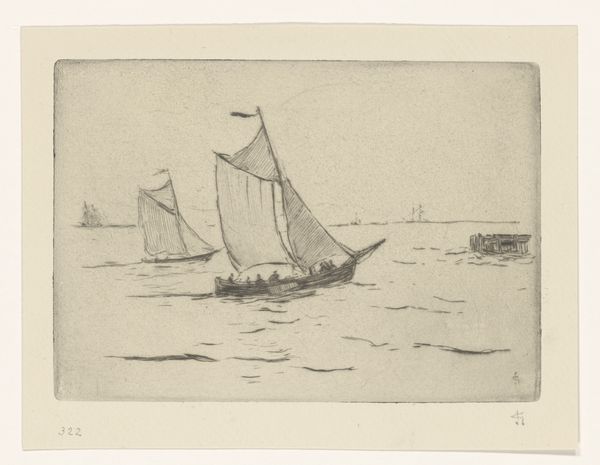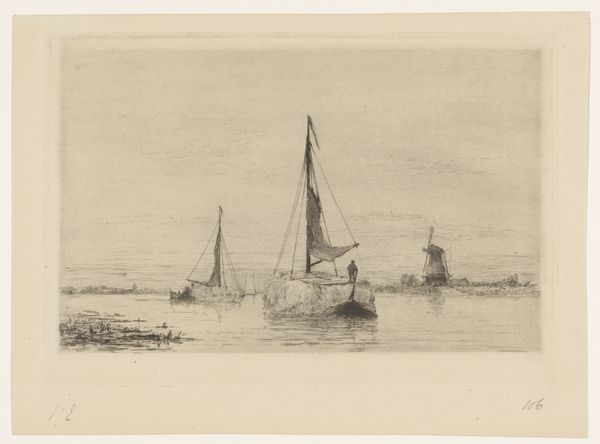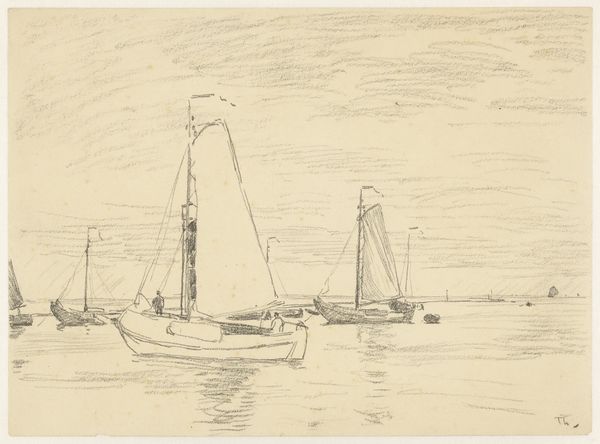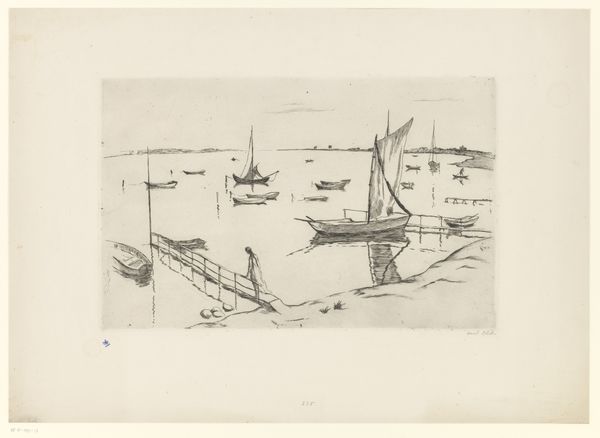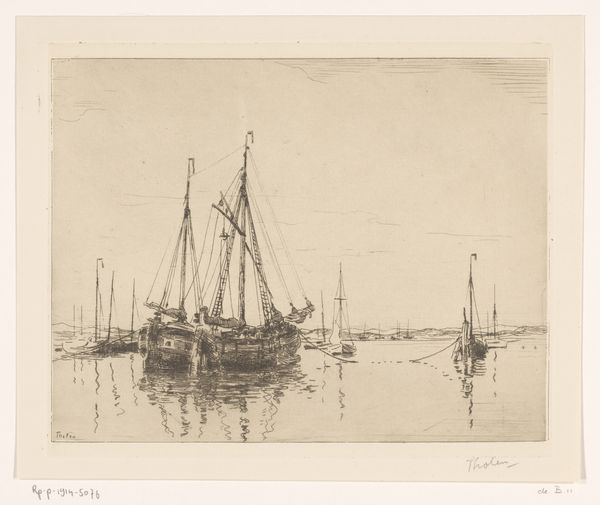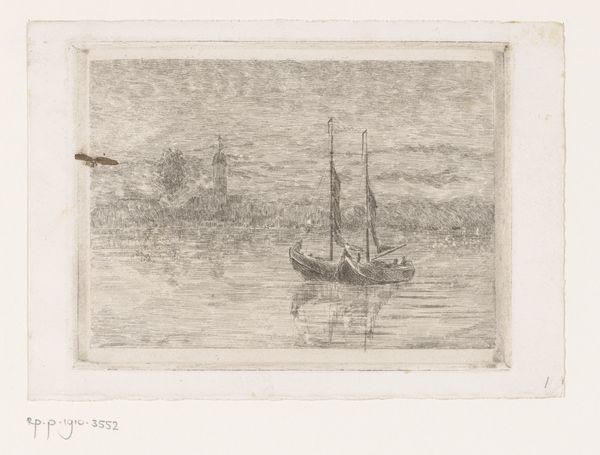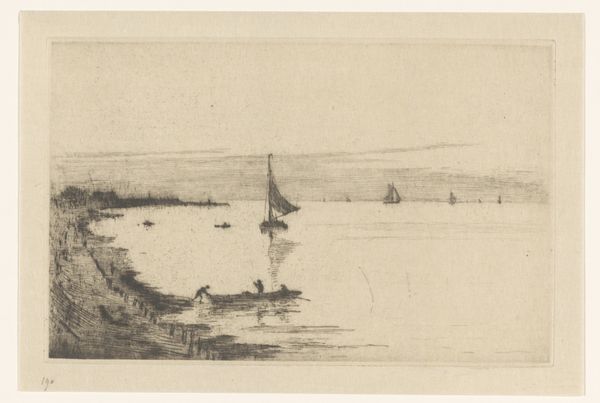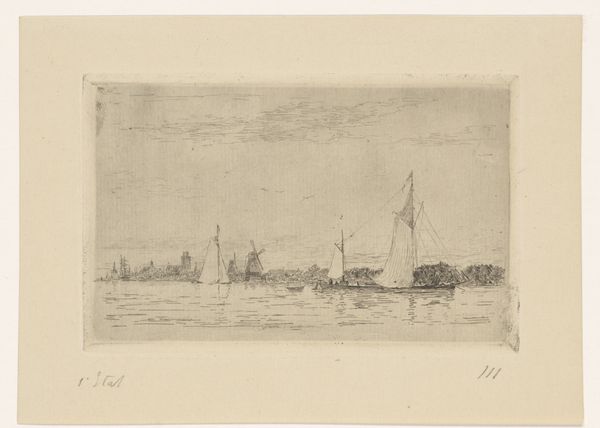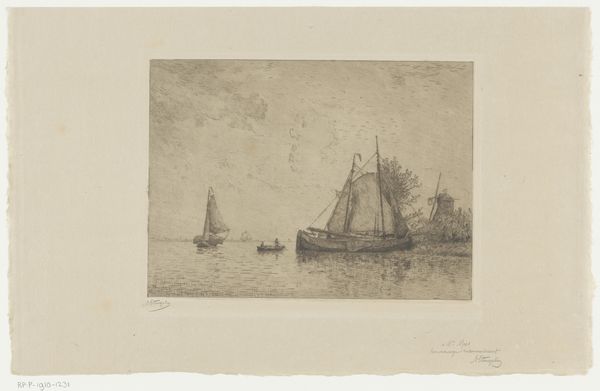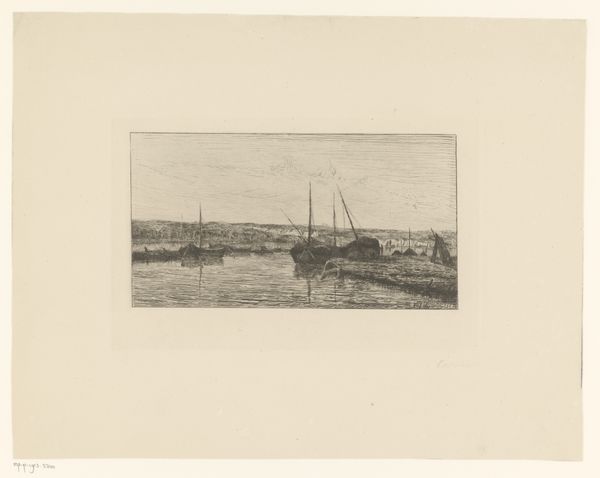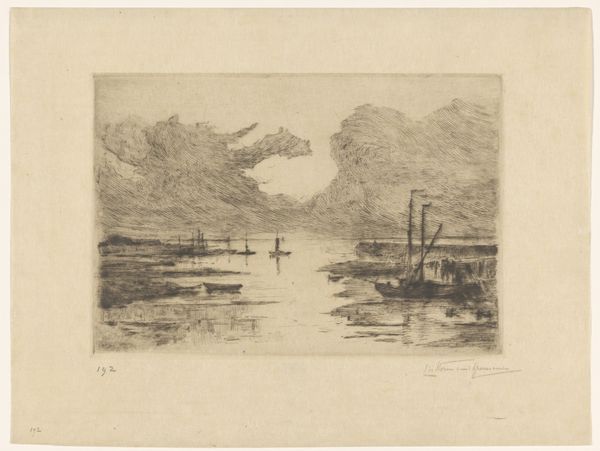
Dimensions: height 126 mm, width 175 mm
Copyright: Rijks Museum: Open Domain
Curator: This delicate print is called "Drecht" and it's attributed to Wijnand Otto Jan Nieuwenkamp, possibly created between 1914 and 1917. Editor: My first impression is a profound stillness. The etching captures a serene Dutch landscape, almost meditative in its tranquility. It's like looking at a faded memory. Curator: Indeed. Note the artist’s choice of etching. The precision of the lines allows for detailed representation, from the reflections of the boat in the water to the distant windmill. And think about the labour involved in etching each plate to achieve such intricate details. It really highlights the material process involved in producing printed images at scale at the time. Editor: I am intrigued by how this serene scene fits into the context of its time. Nieuwenkamp was working during a period of immense upheaval, the first World War raged on. How might we understand the landscape genre as a possible withdrawal from that historical moment? Or is it an active assertion of traditional values? Curator: I appreciate that perspective. The "Dutch Golden Age" influence is undeniable, calling back to traditions of landscape art. This nostalgia, though, had practical concerns—prints like these were easily disseminated and offered artists means of income. Moreover, landscapes during times of rapid urbanization and industrialization carried significant cultural weight. Editor: Right, mass production allowed these images to reach broader audiences, impacting how people viewed both their world and its past. One could argue that this print not only aestheticizes rural life but commodifies it too. Curator: Exactly! Considering its context, the work also prompts questions around audience and reception. What were Nieuwenkamp's artistic influences and choices and how did that speak to the socio-political environment in his day? Editor: Fascinating, this exploration provides new angles for the reception of the artist. "Drecht", initially just a beautiful image, turns out to hold narratives that reverberate beyond its peaceful appearance. Curator: Precisely, examining the material and historical underpinnings illuminates not just the 'what' but the 'how' and 'why' of this etching.
Comments
No comments
Be the first to comment and join the conversation on the ultimate creative platform.
